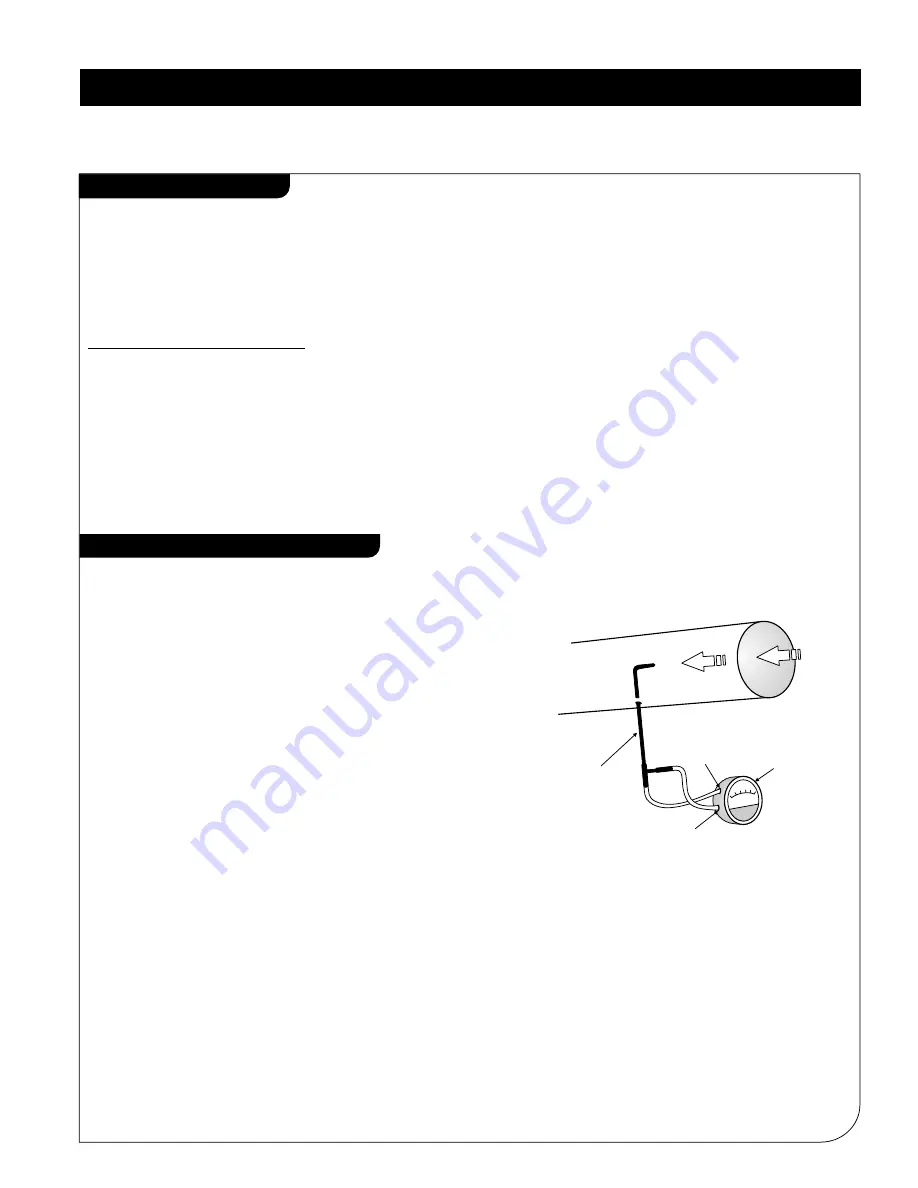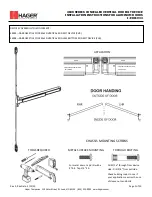
Air Flow Balancing
14
Pitot Tube Airflow Balancing
The following is a method of field balancing an HRV/ERV using
a Pitot tube advantageous in situations when flow stations are not
installed in the ductwork. Procedure should be performed with the
HRV/ERV on normal speed.
The first step is to operate all mechanical systems on most desire
speed, which have an influence on the ventilation system, i.e.the
forced air furnace or air handler if applicable. This will provide the
maximum pressure that the HRV/ERV will need to overcome, and
allow for a more accurate balancing of the unit.
Drill a small hole in the duct (about 3/16"), three feet downstream
of any elbows or bends, and one foot upstream of any elbows or bends.
These are recommended distances but the actual installation may limit
the amount of straight duct.
The Pitot tube should be connected to a magnehelic gauge capable
of reading from 0 to 0.25 in. (0-62 Pa) or other digital airflow meter.
The tube coming out of the top of the pitot is connected to the
high pressure side of the gauge/meter and the tube coming out of the
side of the pitot is connected to the low pressure or reference side
of the gauge/meter.
Insert the pitot tube into the duct; pointing the tip into the airflow. For general balancing it is sufficient to move the
pitot tube around in the duct and take an average or typical reading. Repeat this procedure in the other duct.
Determine which duct has the highest airflow (highest reading on the gauge). Then slower down that motor speed
by adjusting dial/speed controller on control board to match the lower reading from the other duct. The flows
should now be balanced. Actual airflow can be determined from the gauge/metre reading. The value read on the
gauge is called the velocity pressure and on the flow meter is called air velocity(FPM). The Pitot tube comes with
a chart that will give the air flow velocity based on the velocity pressure indicated by the gauge. This velocity will
be in either feet per minute or metres per second. To determine the actual airflow, the velocity is multiplied by the
cross sectional area of the duct being measured.
MAGNEHELIC
0
.1
.2
.3
.4
.5
Duct
AIR
FLOW
Pitot
tube
High
Pressure
Tap
Low
Pressure Tap
Magnehelic
gauge
Pitot tube and gauge
NOTE:
Place the magnehelic gauge on a
level surface and adjust it to zero.
Balancing Procedure
All the HRV/ERV’s components are in place and functioning properly.
All sealing of the ductwork system has been completed.
Set the unit to normal speed.
Air flows in branch to specific areas of the house should be adjusted first prior to balancing the unit.
After taking reading of both the stale air to the HRV/ERV duct and fresh air to the house duct, the duct with
the lowerCFM reading should be left alone while the duct with the higher airflow should be slower down to
match the lower
reading by adjusting dial/speed controller on control board(see board layout on page-4).
Return unit to appropriate fan speed for normal operation.
Prior to balancing, ensure that:
1.
2.
3.
4.
5.
6.
It is required to have balanced air flows in an HRV/ERV. The volume of air brought in from the outside
must equal the volume of air exhausted by the unit while running at normal speed. If the air flows are
not properly balanced, then:
• The HRV/ERV may not function at its maximum efficiency
• A negative or positive air pressure may occur in the house or condo
• The unit may not defrost properly
For units without built-in true Automatic Electronic Air-balancing and
for cross verification only





































